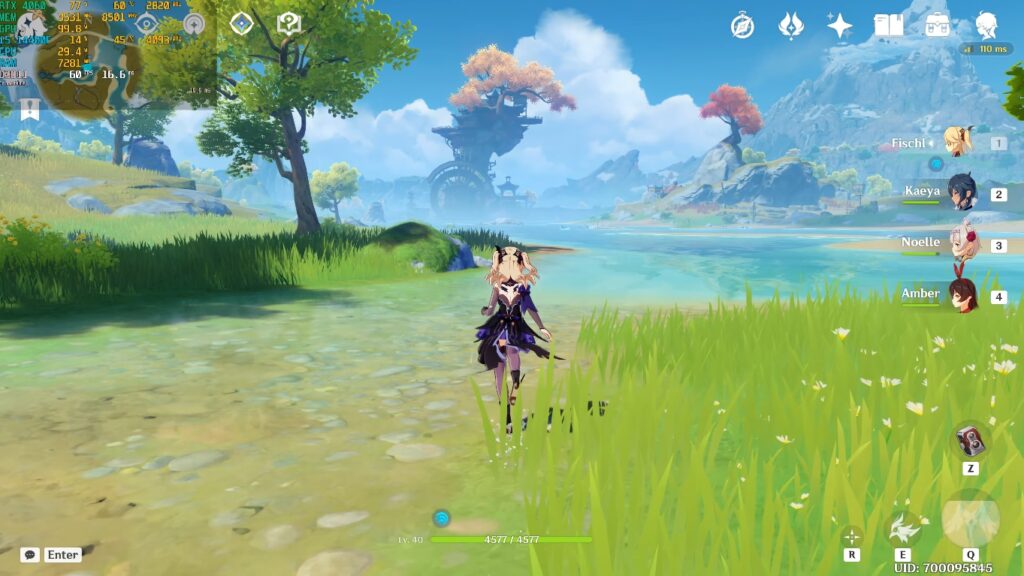The mobile gaming industry has witnessed exponential growth over the past decade, with revenues projected to reach $175 billion by 2021, according to Newzoo’s Global Games Market Report (Newzoo, 2021). As the market becomes increasingly saturated, app game developers must adopt innovative strategies to stand out and achieve success. This article delves into the essential mobile strategies that developers can implement to enhance user engagement, optimize monetization, and ensure long-term sustainability.

Understanding the Mobile Gaming Landscape
The mobile gaming sector is characterized by a diverse range of genres, platforms, and monetization models. According to Statista, as of 2021, mobile games accounted for approximately 50% of the global gaming market share (Statista, 2021). This growth is driven by the proliferation of smartphones, improved internet connectivity, and the increasing popularity of casual gaming. Developers must understand the nuances of this landscape to tailor their strategies effectively.
Market Segmentation and Target Audience
Identifying the target audience is crucial for app game developers. The mobile gaming demographic is broad, encompassing various age groups, genders, and gaming preferences. Research by the Entertainment Software Association (ESA) indicates that 70% of gamers are over the age of 18, with a significant portion being female (ESA, 2020). Developers should segment their audience based on factors such as age, gender, gaming habits, and spending behavior to create personalized experiences that resonate with users.
Game Design and User Experience
Game design plays a pivotal role in attracting and retaining players. A well-designed game should offer an engaging user experience (UX) that keeps players coming back. Key elements of effective game design include:
1. Intuitive Controls
Mobile games must feature intuitive controls that accommodate touch interfaces. A study by the Nielsen Norman Group found that users prefer simple, easy-to-learn controls, which can significantly enhance user satisfaction (Nielsen Norman Group, 2020). Developers should prioritize usability testing to refine control schemes and ensure a seamless experience.
2. Compelling Storytelling
Storytelling is a powerful tool in mobile game design. Games like “Genshin Impact” have demonstrated that immersive narratives can drive player engagement and retention. According to a report by App Annie, games with strong narratives see a 30% increase in user retention compared to those without (App Annie, 2021). Developers should invest in narrative development to create emotionally resonant experiences.

Genshin Impact proves that engaging stories increase engagement.
3. Visual and Audio Aesthetics
High-quality graphics and sound design are essential for creating an immersive gaming experience. Research indicates that 70% of players consider graphics to be a critical factor in their gaming experience (GameAnalytics, 2020). Developers should leverage advanced graphics engines and sound design techniques to enhance the overall aesthetic appeal of their games.
Monetization Strategies
Monetization is a crucial aspect of mobile game development. Developers must choose the right monetization model to maximize revenue while maintaining user satisfaction. Common monetization strategies include:
1. In-App Purchases (IAP)
In-app purchases have become a dominant revenue stream for mobile games. According to a report by Sensor Tower, IAPs accounted for 79% of global mobile game revenue in 2020 (Sensor Tower, 2020). Developers should implement IAPs strategically, offering players valuable content without compromising the gameplay experience. For instance, “Fortnite” successfully utilizes IAPs for cosmetic items, allowing players to customize their avatars without affecting game balance.
2. Ad Monetization
Advertising is another viable monetization strategy. Developers can integrate rewarded video ads, interstitial ads, and banner ads to generate revenue. A study by AdColony found that rewarded video ads have a 90% completion rate, making them an effective way to engage users while monetizing (AdColony, 2020). Developers should balance ad frequency to avoid disrupting the user experience.
3. Subscription Models
Subscription models are gaining traction in the mobile gaming industry. Services like Apple Arcade and Google Play Pass offer users access to a library of games for a monthly fee. According to a report by App Annie, subscription-based games saw a 50% increase in revenue in 2020 (App Annie, 2021). Developers should consider implementing subscription models to create a steady revenue stream while providing value to players.
User Acquisition and Retention
Acquiring and retaining users is a significant challenge for app game developers. A comprehensive user acquisition strategy should encompass various channels, including social media, influencer marketing, and app store optimization (ASO).
1. Social Media Marketing
Social media platforms are powerful tools for user acquisition. Developers can leverage platforms like Instagram, TikTok, and Twitter to create buzz around their games. A study by Hootsuite found that 54% of social media users research products on these platforms before making a purchase (Hootsuite, 2021). Engaging content, such as trailers and gameplay snippets, can attract potential players and drive downloads.
2. Influencer Partnerships
Collaborating with influencers can significantly boost a game’s visibility. Research by Influencer Marketing Hub indicates that influencer marketing can yield an ROI of $5.78 for every dollar spent (Influencer Marketing Hub, 2021). Developers should identify relevant influencers within their target audience and create partnerships that promote their games authentically.
3. App Store Optimization (ASO)
ASO is critical for improving a game’s visibility in app stores. Developers should optimize their app titles, descriptions, and keywords to enhance discoverability. According to a report by Mobile Action, 65% of app downloads come from organic searches (Mobile Action, 2020). Regularly updating app metadata and encouraging user reviews can further improve ASO efforts.
Data Analytics and Iteration
Data analytics is essential for understanding player behavior and optimizing game performance. Developers should utilize analytics tools to track key performance indicators (KPIs) such as user retention, session length, and monetization metrics. A report by GameAnalytics found that games with data-driven decision-making see a 20% increase in user retention (GameAnalytics, 2020).
Iterative development is crucial for refining gameplay and addressing user feedback. Developers should adopt agile methodologies to facilitate rapid prototyping and testing. By continuously iterating on their games, developers can enhance user satisfaction and drive long-term engagement.
Conclusion
In conclusion, the mobile gaming industry presents both challenges and opportunities for app game developers. By understanding the market landscape, prioritizing user experience, implementing effective monetization strategies, and leveraging data analytics, developers can position themselves for success. As the industry continues to evolve, staying informed about emerging trends and technologies will be essential for maintaining a competitive edge. The key takeaways include the importance of audience segmentation, the role of compelling game design, the effectiveness of diverse monetization strategies, and the necessity of data-driven decision-making. By adopting these strategies, developers can navigate the complexities of the mobile gaming market and achieve sustainable growth.
References:
- Newzoo. (2021). Global Games Market Report.
- Statista. (2021). Mobile Games Market Share Worldwide.
- Entertainment Software Association (ESA). (2020). Essential Facts About the Computer and Video Game Industry.
- Nielsen Norman Group. (2020). Mobile Game Usability: A Study of User Experience.
- App Annie. (2021). The State of Mobile Gaming 2021.
- GameAnalytics. (2020). The Importance of Graphics in Mobile Games.
- Sensor Tower. (2020). Mobile Game Revenue Report.
- AdColony. (2020). The Effectiveness of Rewarded Video Ads.
- Influencer Marketing Hub. (2021). Influencer Marketing Benchmark Report.
- Mobile Action. (2020). App Store Optimization Insights.
- Hootsuite. (2021). The Global State of Digital 2021.

